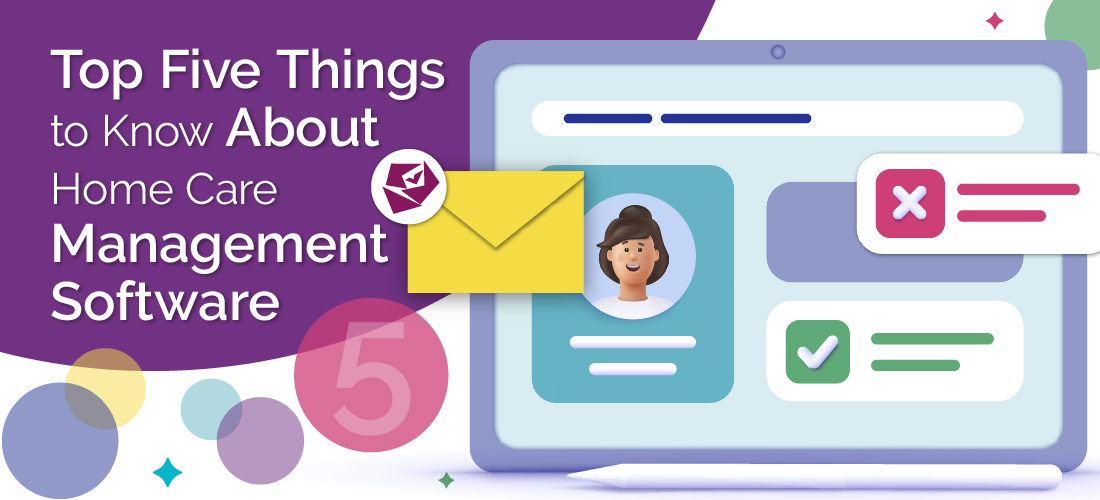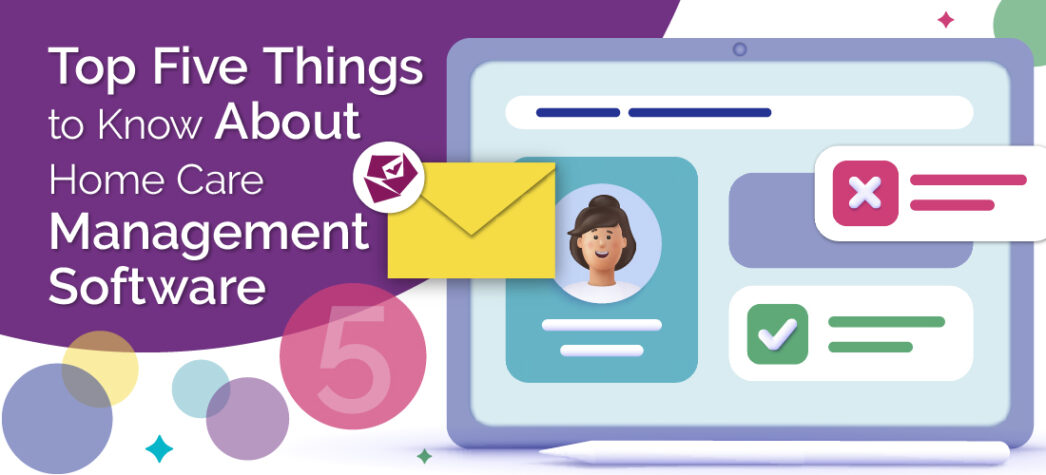
If your home care agency has trouble completing daily tasks using outdated methods, it’s time to make things more efficient. Moving from manual processes to an unfamiliar technology can seem daunting, but there are some significant benefits to using software instead of paper or even spreadsheets.
Once you’ve done the hard part of hiring a home care software vendor (because we all know change is hard), you must ensure your staff uses the new system to the best of their ability. Learning new software can be challenging, so let’s review the top five things agencies should know about home care management software.
Utilize Training
If you don’t know if you need to use software, what’s the benefit to your business? There are two major reasons to move from paper to software:
- Improve your day-to-day operations
- Ensure your agency is compliant with state and federal regulations
Doing both well starts with digging into how to use the software.
Training is the key to using software effectively and understanding all the tools and features available to improve your operations. It’s also important to help you get paid faster and not get audited, so take training seriously.
If agencies are struggling, many times it’s because they haven’t properly trained all of their employees on how to use the software. This can lead to several things, including underutilization or even system misuse. Not fully training all staff could easily lead to missed opportunities to improve operations and increase efficiency.
Software is very nuanced, and in many cases, agencies are taking extra steps to do a task because they didn’t receive proper training. Instead of asking for help, they tried to solve the problem themselves with a workaround.
For example, schedulers can set up a repeating schedule instead of adding a one-time shift every week. So, instead of adding 27 shifts, the scheduler could have duplicated the first shift and saved much time.
Each team member will use the software differently, whether they are a scheduler, recruiter, or caregiver. Each role has its own training path. Your agency must follow the onboarding and training process outlined by your software provider.
Many providers offer user guides, additional webinars, and pre-recorded training videos your staff can watch when they need a refresher. Providing proper training resources to your team so they know how to accomplish each task in their day is the first way to stop fighting your software.
Update Regularly
The software is designed to run elegantly without the user seeing all the gears turning in the background. But like everything else, technology evolves, and systems must be updated.
Ensure your office updates the system regularly to avoid missing out on new features and improvements. In some cases, outdated software may become incompatible with newer hardware or operating systems.
We recommend updating your software at least once a month. If your provider sends an update notification, heed their advice and update so you don’t miss out on necessary changes.
In addition to updating your software, you should set your operating system (Microsoft Windows or Apple iOS) to update automatically. This is critical regarding HIPAA compliance if you rely on your operating system to provide the most recent security updates, including anti-malware or antivirus protection.
Customize Your Software
You know your business better than anyone, so why not ensure your tools are customized to fit your needs? Your software is one of the most important tools for business success and growth, so ensure it’s optimally set up.
Start by asking a few simple questions, such as:
- When does your work week start?
- What does overtime look like in your state?
- What are your pay rates?
- Are you paying your caregivers by the hour, by client, or a mix of both?
Make sure your software aligns with your business operations, objectives, and goals. Do everything you can to customize your system to mirror your day-to-day working environment. These efforts can greatly increase efficiency and productivity.
Stop using preset defaults and start customizing features so you’re not fighting your software but rather using it as a tool to streamline your operations.
For example, did you know you can customize a client’s pay rate or the pay rate for a specific shift? Save yourself time and stop going into the system’s backend to make manual adjustments before sending caregiver hours to payroll.
Many default settings are actually customizable in home care software systems, so be sure your agency is utilizing those custom options so you can stop fighting your software.
Increase Visibility to Improve Decision-Making
Is your agency using multiple software systems like payroll, electronic visit verification (EVV), and a customer relationship management (CRM) system? Did you know you can make all those tools work together or have one software that does everything?
If your agency is using multiple systems and not integrating, this can lead to siloed data, making it more challenging to gain a competitive view of your business operations.
For example, if your marketing team cannot access the data to see which prospects turned into clients, it makes it harder for them to know where good leads are coming from and where to devote their time and energy.
Consistent notifications are just another example of why integrations are important. If office staff is not alerted when a caregiver fails to show up for a shift, that could create big problems. If an agency’s systems aren’t talking to each other or manual processes like paper timesheets are still being used, there’s a real possibility that something critical to your decision-making process might get missed or overlooked.
This could ultimately lead to missed shifts, incorrect payments, missed revenue, or even a state audit if too many things are being siloed and overlooked.
As human beings, we are prone to making mistakes. That’s just part of life. And it’s a big reason why we should let software do the heavy lifting for us. You want to have as few errors as possible when it comes to running a business, so stop fighting your software and let it help your agency run more efficiently.
Use Analytics
If your home care management software does not offer analytics or reporting functionality, you should probably ask why. Many software systems include these valuable and important features, but many agencies do not fully utilize them.
Using analytics to track key performance indicators (KPIs) and identify trends can help agencies make data-driven decisions and improve their operations. However, you only get out as much as you put in, so you can’t expect to get fully detailed analytics or reports if you’re not putting data into your software.
Here are some important things to keep in mind when it comes to analytics:
- Utilize your data. What KPIs are you tracking?
- What does your caregiver turnover rate look like?
- How many referrals did you get last month versus the previous month?
- Has your revenue become stagnant?
You can easily track this information in your home care software to monitor trends and review critical reports.
- Customize your reports to get the information you need from your software. Ensure you track the number of clients, caregivers, and hours to help you determine if your revenue is on track or something is off.
- Improve your processes. Your reports will reflect the data you collect, so if you want better data, you have to improve how and what information you input into your software. Be conscious of the type of information you choose to put into the system. While one can easily think “the more, the better,” it’s imperative that the information going into the system is relevant and will answer the questions your agency will need answers to in the future.
Whether you want your home care agency to grow or seek ways to improve your operations and run your business more efficiently, the first step must be ditching paper timesheets and other manual processes.
Moving to a home care management software specifically designed to help your agency run better is the best solution to meeting your agency’s day-to-day needs. Then, let your software do the work for you. That’s its purpose: to allow your agency to move away from manual processes, save time and energy, and help your day-to-day operations become more efficient and effective. It was designed to make your life easier and less complicated, so stop fighting it and let it do its job.
 About Robin Tuck, Senior Product Owner
About Robin Tuck, Senior Product Owner
The Rosemark System
Guest blog for corecubed
Robin Tuck is the Senior Product Owner at the Rosemark System, a home care management software provider. A seasoned veteran in the home care technology space, Robin is passionate about finding creative solutions to help her customers get the most out of their software so they can focus more on their caregivers and clients. When she’s not working, she’s probably writing or taking walks.

